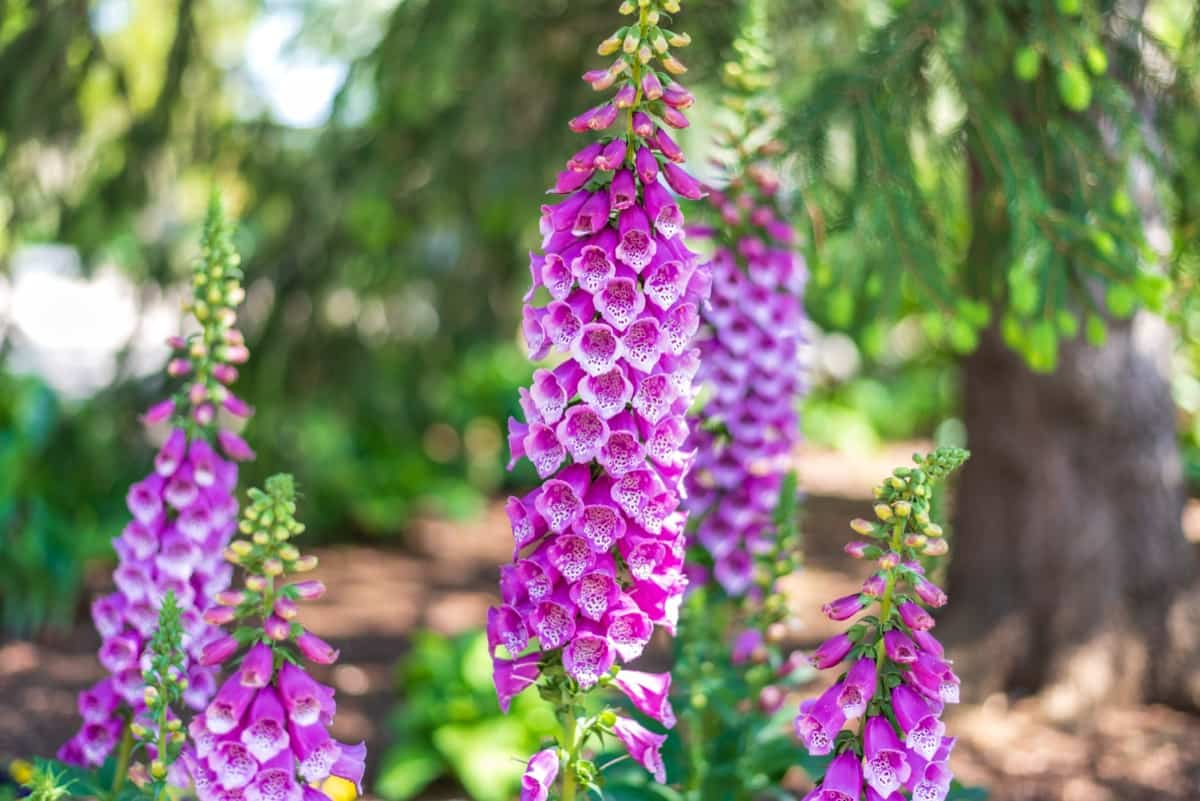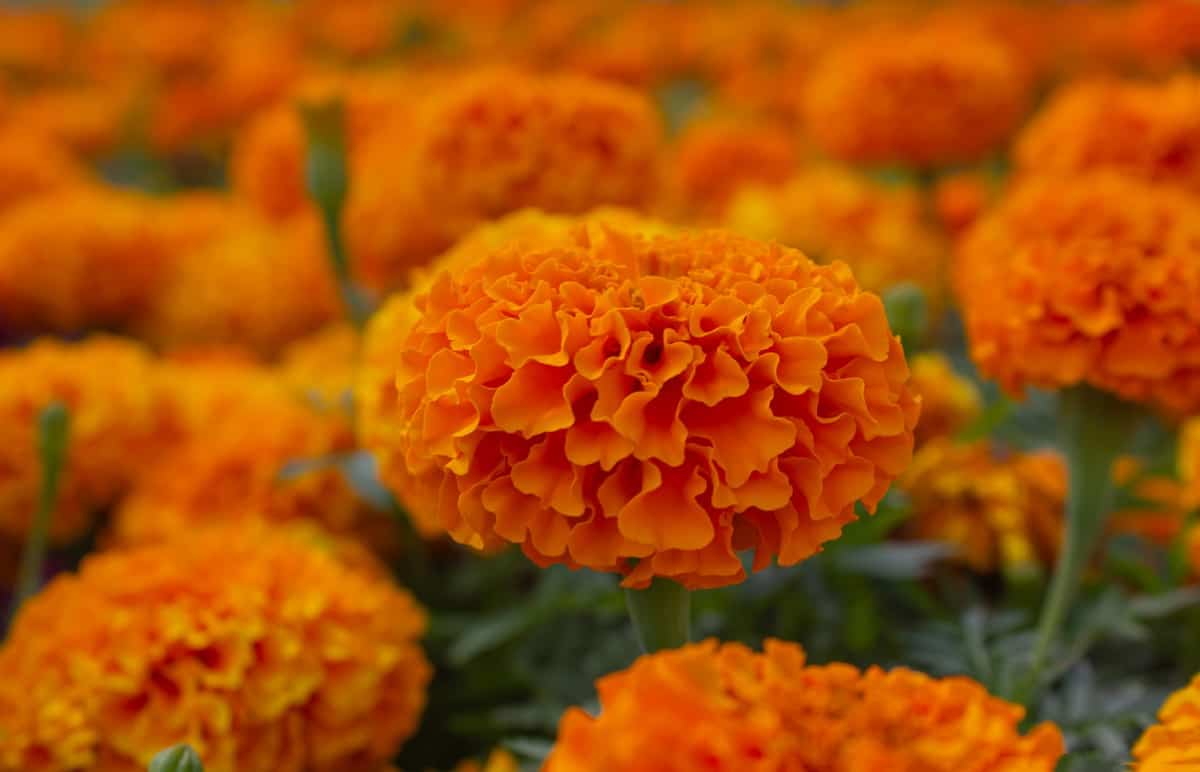Flower production is an important factor to consider when determining whether a flowering plant is perennial or annual. Understanding whether a flowering plant is perennial or annual is crucial for successful gardening and landscaping design. It helps you plan your garden layout effectively, choose appropriate companion plants that thrive together, ensure optimal care based on their specific needs, and create visually appealing landscapes that change throughout each season.

10 Key Indicators to Find Whether the Flowering Plant is Perennial or Annual
Life Cycle
The life cycle refers to a plant’s stages, from seed germination to seed production and eventual death. Perennial plants generally have a longer life cycle than annual plants. They can live for multiple years, often coming back year after year without needing replanting. On the other hand, annual plants complete their entire life cycle within one growing season.
A perennial plant’s life cycle goes through various stages, such as seed germination, vegetative growth, flowering, and seed production. Each stage contributes to its longevity and ability to survive harsh conditions. Annual plants have a shorter life cycle that typically lasts only one growing season. They start from seeds and grow rapidly during favorable conditions.
Growth Habit
One indicator of growth habit is the plant’s overall size and structure. Perennials tend to be larger, with extensive root systems and multiple stems emerging from a central base. On the other hand, Annuals are generally smaller and more compact, with a single stem or few branches.
Another indicator lies in the branching pattern of the plant. Perennials often have branching structures that spread horizontally, creating a fuller appearance. Annuals typically have upright growth habits with minimal branching. The rate at which plants grow can also shed light on their life cycle. Perennials typically grow more slowly but continue to increase in size each year.
Root System
One key indicator to look for in a root system is its depth and spread. Perennial plants typically have deep, extensive root systems that penetrate the soil, anchoring them firmly and allowing them to access nutrients from deeper layers. On the other hand, annual plants often have shallow roots that spread wide but do not go as deep. Another indicator is the presence of storage organs such as tubers or bulbs.
In case you missed it: 20 Best Online Plant Nurseries in the USA: For Indoors, Outdoors, Houseplants, Trees, and Perennials

These structures are common in many perennial plants as they store energy reserves for future growth and survival during adverse conditions. Annuals may lack these storage organs since they complete their life cycle within one growing season. Additionally, observing how easily a plant can be uprooted can provide clues about its longevity.
Perennials usually have stronger and more tenacious roots than annuals, which might have fragile or less developed root systems. Moreover, examining the overall structure of the roots can also reveal differences between perennials and annuals. Perennial plants often exhibit well-developed lateral roots that branch from a central taproot or fibrous main roots, while annuals may possess fewer lateral branches.
Stem Characteristics
Consider the thickness of the stem. Perennial plants often have thicker stems compared to annuals. This is because they need more structural support to survive year after year. Next, examine the flexibility of the stem. Perennials tend to have more flexible stems that can bend without breaking easily. This allows them to withstand strong winds and other environmental factors.
Pay attention to any visible signs of woody growth on the stem. Woody stems are typically found in perennial plants that develop lignin, making them stronger and more durable. Additionally, observe whether new shoots emerge from the base of the plant or along its length. Perennials often produce new growth from their base yearly, while annuals grow only from seeds.
Leaf Structure
The structure of a plant’s leaves can provide valuable clues about whether it is a perennial or an annual. Take a close look at the leaves’ shape, texture, and arrangement to help determine the plant’s lifecycle. Perennial plants often have broad, sturdy leaves well-adapted for long-term growth. These leaves may be thick and leathery, helping them withstand harsh weather conditions year after year.
On the other hand, annual plants typically have thinner and more delicate leaves. They don’t need to invest as much energy into building durable foliage since they only live for one season. Annuals often have simple leaf structures without any extra lobes or divisions.
Flower Production
Perennial flowers typically have a longer blooming period, with flowers that may last several weeks or even months. On the other hand, annual flowers tend to have a shorter blooming period, often lasting only a few weeks. When examining flower production, it’s important to look at the quantity and quality of blooms. Perennial plants generally produce more flowers over their lifespan compared to annuals. They also often have larger and more showy blooms.
The timing of flower production can also provide clues about the plant’s life cycle. Perennials may bloom in spring or summer, while some varieties may even produce multiple flushes of blooms throughout the year. Annuals, on the other hand, usually bloom during a specific season before completing their life cycle.
Seed Production
With their longer lifespan, perennial plants typically have well-developed seed production mechanisms. They invest more energy into producing seeds capable of germinating and growing into new plants. This ensures the perpetuation of the species over multiple years. On the other hand, annual plants focus on producing many seeds within their short lifespan.
In case you missed it: Are Zinnias Perennials or Annuals: Discover Common Misconceptions

Their goal is to disperse as many seeds as possible to maximize their chances of survival and propagation in one growing season. The seed production process can vary between different types of plants. Some produce single-seeded fruits or pods containing matured seeds, while others develop clusters or heads with numerous small individual seeds.
Environmental Requirements
The environment determines whether a flowering plant is perennial or annual. Different plants have specific requirements for sunlight, temperature, humidity, and soil conditions. Sunlight is an essential factor for plant growth. Some plants thrive in full sun exposure, while others prefer shade or partial shade. By observing how much sunlight a flower receives throughout the day, you can determine if it is more likely to be perennial or annual.
Temperature also affects the growth and development of plants. Certain flowers are adapted to cooler climates and will not survive in hot temperatures. Others require warm weather to flourish. Pay attention to temperature fluctuations to determine if a flowering plant fits into the category of perennial or annual.
Humidity levels influence the ability of plants to retain water and prevent dehydration. Plants that thrive in high-humidity environments may need regular watering if grown in drier regions. Soil composition is another vital aspect when considering whether a flowering plant is perennial or annual. Some flowers prefer well-draining soil with ample organic matter, while others tolerate clayey soil conditions.
Life Span
The life span refers to how long the plant lives and produces flowers. Perennial plants have a longer life span, often lasting for many years, while annual plants complete their life cycle in just one year. Perennials are known for surviving winter conditions and regrowing each year. On the other hand, annuals have a shorter lifespan and typically die off at the end of the growing season. They complete their entire life cycle, from germination to flower production and seed development, within one year. As a result, they need to be replanted each year to enjoy their vibrant colors.
Observation over Time
By closely observing the behavior of a flowering plant over time, you can gain valuable insights into whether it is perennial or annual. This is because certain characteristics and patterns become more evident as the plant goes through its life cycle. Take note of any changes in the root system, stem characteristics, leaf structure, flower production, and seed production. Perennial plants often show signs of continuous growth and development, while annuals have a more defined lifespan.
In case you missed it: Are Marigolds Perennials or Annuals: Defining Perennials and Annuals

Conclusion
Understanding whether a flowering plant is perennial or annual is crucial for any gardener or enthusiast. It provides valuable insights into the plant’s life cycle, growth habits, environmental requirements, and overall lifespan. Knowing the difference between perennial and annual flowers allows us to plan our gardens more effectively. Perennials are plants that live for multiple years, while annuals complete their life cycle within one growing season.
- Feed Your Flock for Less: Top 10 Tips to Save on Chicken Feed
- Ultimate Guide to Ossabaw Island Hog: Breeding, Raising, Diet, and Care
- Hatching Answers: The Top 10 Reasons Your Chickens Aren’t Laying Eggs
- Eggs and Economics: Breaking Down the Cost of Raising Backyard Chickens
- Defend Your Greens: Proven Methods to Keep Iguanas Out of Your Garden
- Ultimate Guide to Cinnamon Queen Chicken: A Comprehensive Guide for Beginners
- Ultimate Guide to California Tan Chicken: Breeding, Raising, Diet, Egg-Production and Care
- Ultimate Guide to Marsh Daisy Chicken: Breeding, Raising, Diet, and Care
- 10 Types of Chicken Farming Businesses You Can Start for Profits